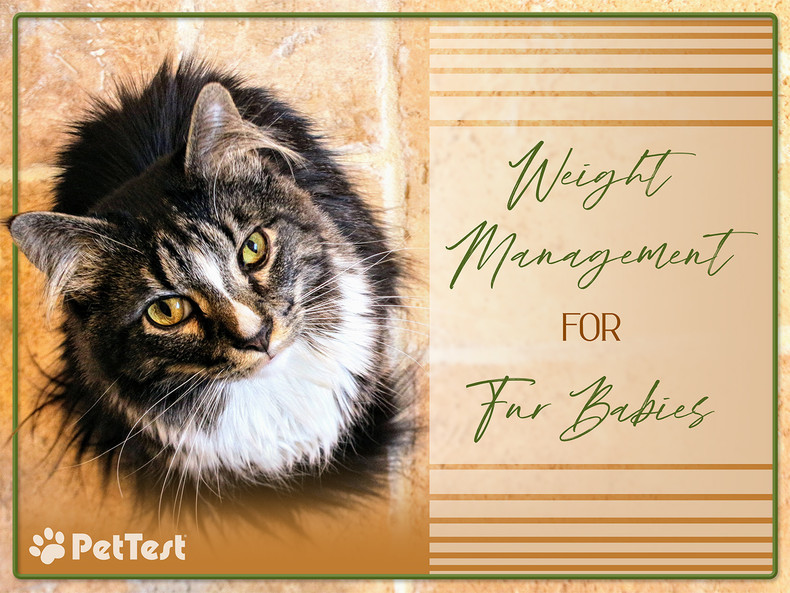Weight Management for Fur Babies
After being diagnosed with any illness, weight management is usually extremely vital. Just like humans, being overweight or underweight can cause problems and worsen those already present. As kitty ages, there is less play and more sleep. A little weight gain is normal especially toward the geriatric age range (15+ years old). A little weight loss is normal too. So you may be wondering if weight gain and loss is normal, why the heck am I reading any of this? It is the big weight loss or gain over a short period of time. We know that big weight loss can be a symptom of untreated diabetes. Big weight gain can point to diabetic-influenced heath issues as well. This is why on human doctor new patient paperwork (groan!), sudden weight gain or weight loss is always addressed somewhere in the pile.
Normal weight can vary wildly among breeds, and your best sources for learning the healthy weight range for your baby is your veterinarian. I can offer only two extremely obvious and rather uneducated facts: If kitty looks round and pudgy, they are overweight. If you can see and/or feel their rib cage, they are underweight. If either of these has occurred relatively quickly and are accompanied by major behavioral changes it is time to make an appointment.
So if kitty has been cleared of other diseases and we have to get kitty’s weight up or down, do we keep underweight kitty less active and feed them more? In theory, that is what we humans are told about gaining weight. This is not healthy and absolutely NOT an option for a diabetic kitty. To bring kitty back into healthy weight range, treating contributing medical issues is going to give us a great start. Make sure if kitty is treated with any medication, learn the side effects. For instance, if the medication has been known to cause drowsiness, it might be wise to ask the veterinarian about it with an overweight cat, especially if the medication will be long term. This also applies to underweight kitty because if they are super tired all the time, it may be difficult to get them to eat. Other side effects can cause a huge gain or loss of appetite. Research your medications. Doctors and veterinarians are human and most do a wonderful job, but they are not going to remember everything. Do not be afraid to ask questions if you are not sure about something. Too often I hear pet owners discussing a diagnosis, and someone else asks, “Oh wow what is that?” Answer: “Well they [the vet] didn’t say.” Having a great vet is important and really wonderful to have, but blind obedience benefits no one.
So onto our weight management adventure! The strategy, believe it or not, is the same for under and overweight kitties with fine tuning for each situation. Activity is king in this game. Encouraging activity through active play is healthy for bones, joints, metabolism, and mental health. If kitty has been sedentary or ill for a while, you may have to start out a little at a time. A few minutes a few times a day is a good start. I always make the joke that I walk my kitties because if I get out the super long shoe strings, they will follow me all over the house. (I get steps in that way too – bonus!) Laser pointers are also a hit most of the time. I have a dog that tries to bite at the light, so it must be pretty fun. Stimulation is very important as an extension to activity level. Change out their toys, so they always have something “new” to play with. We often put favorite toys away just as kitty seems less interested in it. A few days later, we get it back out and they will play all day long. Kitties are routine, but even they need you to keep it interesting for them.
If kitty likes catnip, silver vine, cat grass or other cat-safe ingredients to stimulate them, this can lead to more activity easily. Most of my cats have enjoyed rolling in a tiny pile of catnip. Another would grab the cat grass and drag it around, still in the pot. It made a huge mess, but it was so worth it. Any type of activity you can get them to do is beneficial unless restricted by an acute illness such as after a surgery or similar. Even when my cats have been in recovery from a procedure and had to be segregated from the rest of the pets, I have a modular cage/corral with enough pieces so that I could get into the cage with my recovering kitty. This was a necessity anyway to get his medications into him, but even though he was restricted to rest, he was still getting daily stimulation with pets and visits from family members to his domain. We would bring cat nip for him and someone would sit and pet him and talk to him several times a day. He came to expect it and when able would pace the cage and yell until one of us did our job of serving him.
In the end, stimulation and activity can help treat low weight or high weight for kitty. Activity contributes to a healthier metabolism, better blood glucose control, stronger muscles and bones, and generally a longer happier life. Stimulation to encourage activity also helps kitty mentally as well as physically. If you join in the activities along with kitty, you can also reap the health benefits. All movement counts! So go play with your babies!
Find more creative ideas on the Feline Diabetic Support Group on FB.

